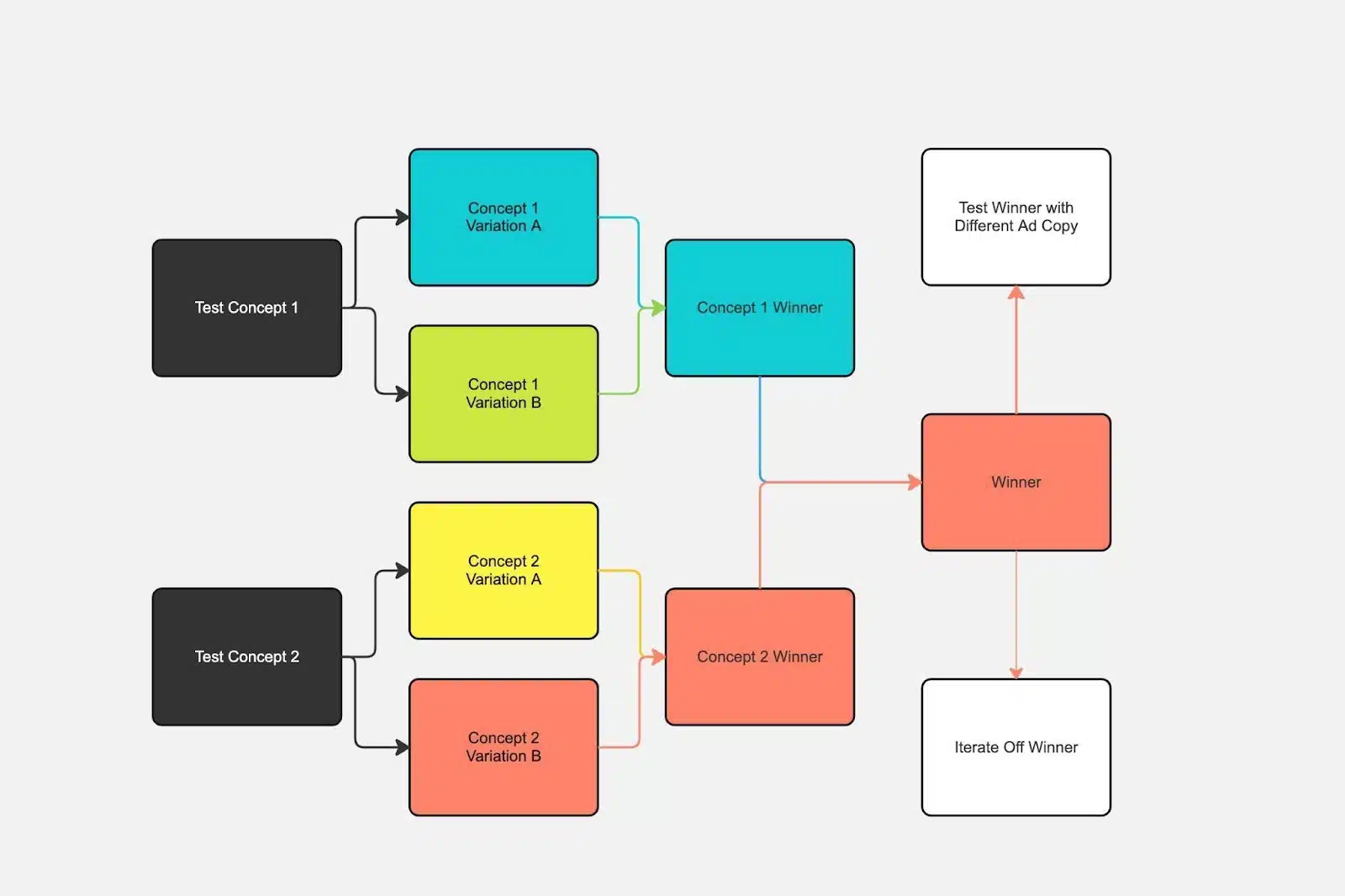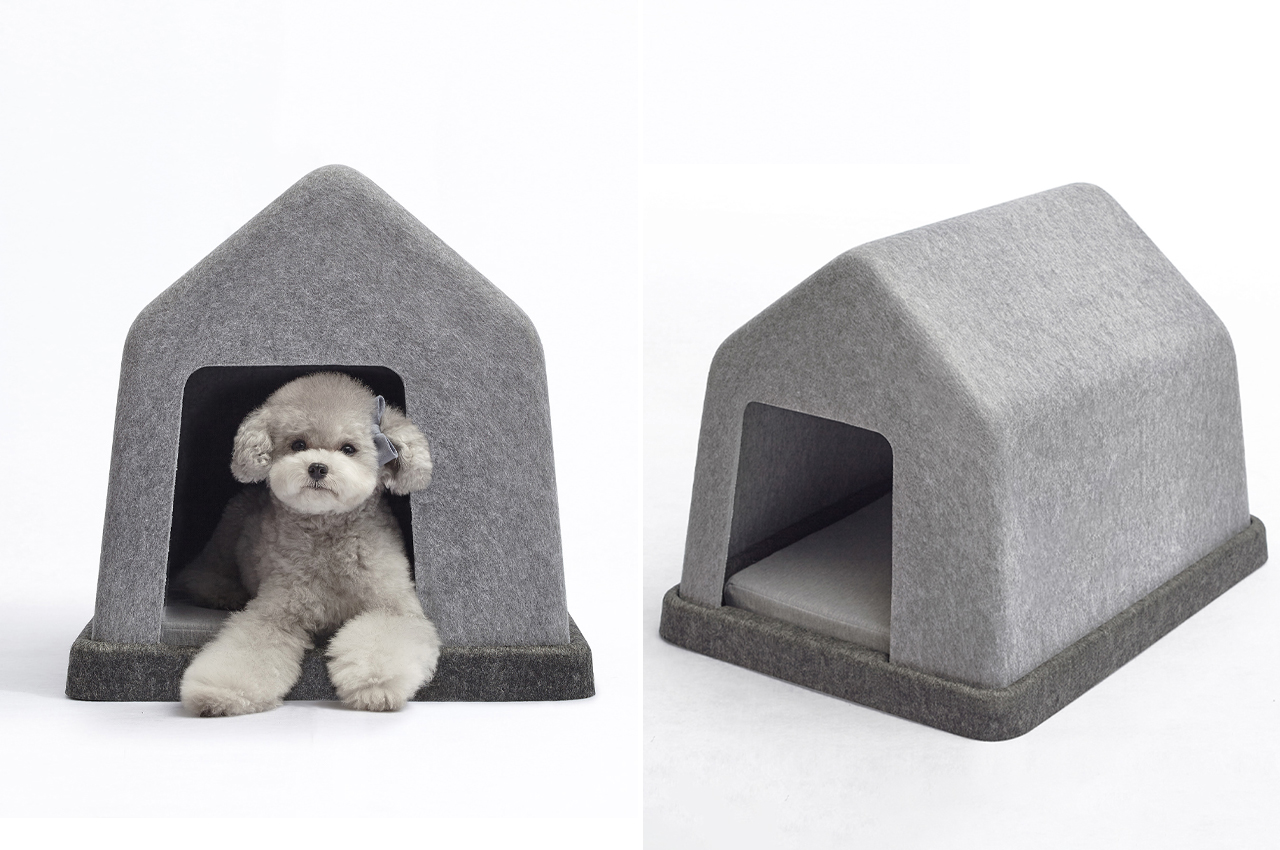A testing primer for B2B paid social creative optimization

Table of Contents
Your B2B ad creative needs to evolve. Learn how to test it right, avoid tired tactics, and turn results into insights on LinkedIn and Meta.
Widely used bidding and targeting algorithms have left paid social advertisers with fewer levers to drive differentiated campaign performance in 2025.
One of those levers – and perhaps the biggest in B2B campaigns – is creative.
But this article isn’t about how to design beautiful, on-brand, high-performing creative elements.
It’s about building a testing process that helps you identify which creative is actually moving the growth needle and where to go from there.
This article covers:
- B2B creative trends to know for 2025.
- Paid social creative testing recommendations.
- Common paid social creative testing mistakes.
- General.
- LinkedIn.
- Meta.
- How to translate tests into ICP insights.
2025 B2B creative trends
Today’s creative trends follow shifting user priorities.
Human-first messaging is replacing product-first positioning
A few years ago, B2B buyers prioritized a product or service’s functionality above all other attributes, and high-performing creative reflected that.
Today’s B2B buyers are responding to relatable, value-driven partnership messaging and themes.
That shift could be a counter-response to the rise of AI, a reflection of the authenticity and humanity long embraced in B2C, a broader societal need to connect – or some combination of all three.
Whatever the reason, it’s clear that your creative needs to humanize your B2B brand.
Video has become a must-have in B2B social creative
When even LinkedIn is leaning hard into video, it’s time to get on board.
Social media and video content were high on B2B marketers’ lists to grab more emphasis late in 2024, per eMarketer.
Videos consistently record higher engagement levels for longer durations than text-only creative.
Standing out requires bold, creative risks
Creative needs to be creative.
B2B ad campaigns have always faced more of a challenge to stand out than more fun, product-based B2C campaigns.
Still, advertisers must feel emboldened to take big swings with humor, empathy, and personalization to stop users’ eyes and thumbs in social feeds.
Nearly half of users said they’d be more likely to look into the products and services of a brand whose creative impressed them, per Magna Global.
Now that you’re more familiar with today’s B2B creative landscape, we’ll move into the nuts and bolts of testing.
Dig deeper: Top 6 B2B paid media platforms: Where and how to advertise effectively
Recommendations for B2B paid social testing
Here’s the flow we follow to test paid social creative at my agency.


Now let’s break down some details you don’t necessarily see in the graphic:
- Creative is always good to refresh. The volume and frequency of refreshes vary by budget, audience size, and data density. Still, to keep new ideas coming and to minimize audience fatigue, rotate in new creatives weekly, biweekly, or at least monthly.
- Each test must incorporate logical lookback windows to glean useful insights and recommendations. The timeframe should be based on data density. Use your judgment and weigh factors like seasonality, big product launches, and company-specific or macro events that might have influenced results.
- Start with big swings (“concepts” in the above visual) to get a clear winner. Once you have a clear winner, you can try little tweaks to get that variation to work, although with the algorithms these days, you may still get false results with a small win because the system might favor the legacy ad.
- Test at least two ad variations for each concept. These variations can include:
- Icons vs. people
- Light vs. dark backgrounds
- Text/CTA variations
- For a clean test, make sure all new ad iterations/tweaked versions are paired with the same ad copy to reduce any unneeded variables.
Common B2B paid social creative testing mistakes
General
Regardless of the channel, we see some mistakes pop up over and over in legacy client campaigns.
Poor audience segmentation
These run the gamut between:
- Too small and over-segmented.
- Too large (especially for brands that have several distinct niches).
- Illogical combinations (believe it or not, I’ve seen prospecting and retargeting audiences lumped together plenty of times).
In general, aim for something big enough to accrue the scale that teaches the platform algorithms but discrete enough for you to pull meaningful insights about that audience’s preferences and behaviors.
Lazy creative
By this, I don’t mean just flat messaging, but:
- Having a limited range of messaging angles.
- Using the same messaging across all funnel stages.
- Sticking to the same old types of creative (e.g., just static images, with no animation, gifs, video, or even carousels).
LinkedIn-specific mistakes
Beyond the above, we often see over-segmented LinkedIn audiences – brands sometimes go a little overboard with the platform’s unique targeting options.
We also frequently need to course-correct for misalignment between funnel stages and user experience.
That could mean:
- Mismatched creative offers.
- Lead forms that don’t fit the context.
- Landing pages that don’t reflect the user’s intent.
Before you launch anything, consider your audience’s buying-journey stage, then put yourself in their shoes.
Would you want to be bombarded with a big “Get a demo” message if you downloaded an infographic without a high-intent topic?
A few additional mistakes we see in LinkedIn campaigns are really just oversights in adopting new features. These include:
- Not mixing up the media (e.g., testing Thought Leader ads or leveraging LinkedIn’s recent push for video).
- Not incorporating LinkedIn’s new CAPI measurement or Revenue Attribution Report, which would help brands see with more precision which creatives were pulling the right users into a journey that eventually leads to pipeline and/or revenue.
Dig deeper: 7 LinkedIn advertising pitfalls: Where your B2B ads setup might stumble
Meta-specific mistakes
Over-segmentation of audiences is also a problem for Meta.
Still, perhaps an even bigger issue is creative that’s “optimized” so thoroughly for universal best practices that it blends right into the user’s feed.
And, yes, this is more common with B2B.
This is why it’s so important to take big swings and test new concepts, even if they feel a bit wild.
Simple iterations on a theme will result in ads getting stale quickly over time.
Avoid the sea of sameness and test bold messaging and out-of-the-box visuals.
Got a great, quippy client testimonial?
See if that raises CTR above your old brand tagline.
Dig deeper: How to get better results from Meta ads with vertical video formats
How to glean ICP insights from B2B creative testing
Great creative testing does more than point the way to high-performing ads.
It also helps you better understand your ideal customer profile (ICP).
That could mean identifying the messaging or media that resonates most – or, in some cases, uncovering new use cases or pain points relevant to the product or service.
Some examples of learnings we’ve gleaned from past tests:
- Ads featuring well-known logos drove a strong lift in CVR.
- Short-form video drove twice the CTR over image-based creative.
- Ads calling out user identifiers like job title or industry drove twice the CTR of ads that didn’t.
These insights aren’t universal, but they gave us helpful direction in rolling out subsequent creative assets for those brands.
Closing thoughts
Even truly differentiated B2B paid social creative won’t achieve maximum impact without being backed by a solid structure and testing strategy.
If you take nothing else from this byline, make sure:
- You’re always testing some version of creative.
- You give yourself permission to take creative chances in both messaging and media.
- You do a sanity check on your audience segmentation to gauge its ability to surface real testing insights and optimizations.
Good luck!
Dig deeper: How to combine Google Ads and LinkedIn Ads for comprehensive B2B campaigns
If you liked the article, do not forget to share it with your friends. Follow us on Google News too, click on the star and choose us from your favorites.
If you want to read more like this article, you can visit our Technology category.


